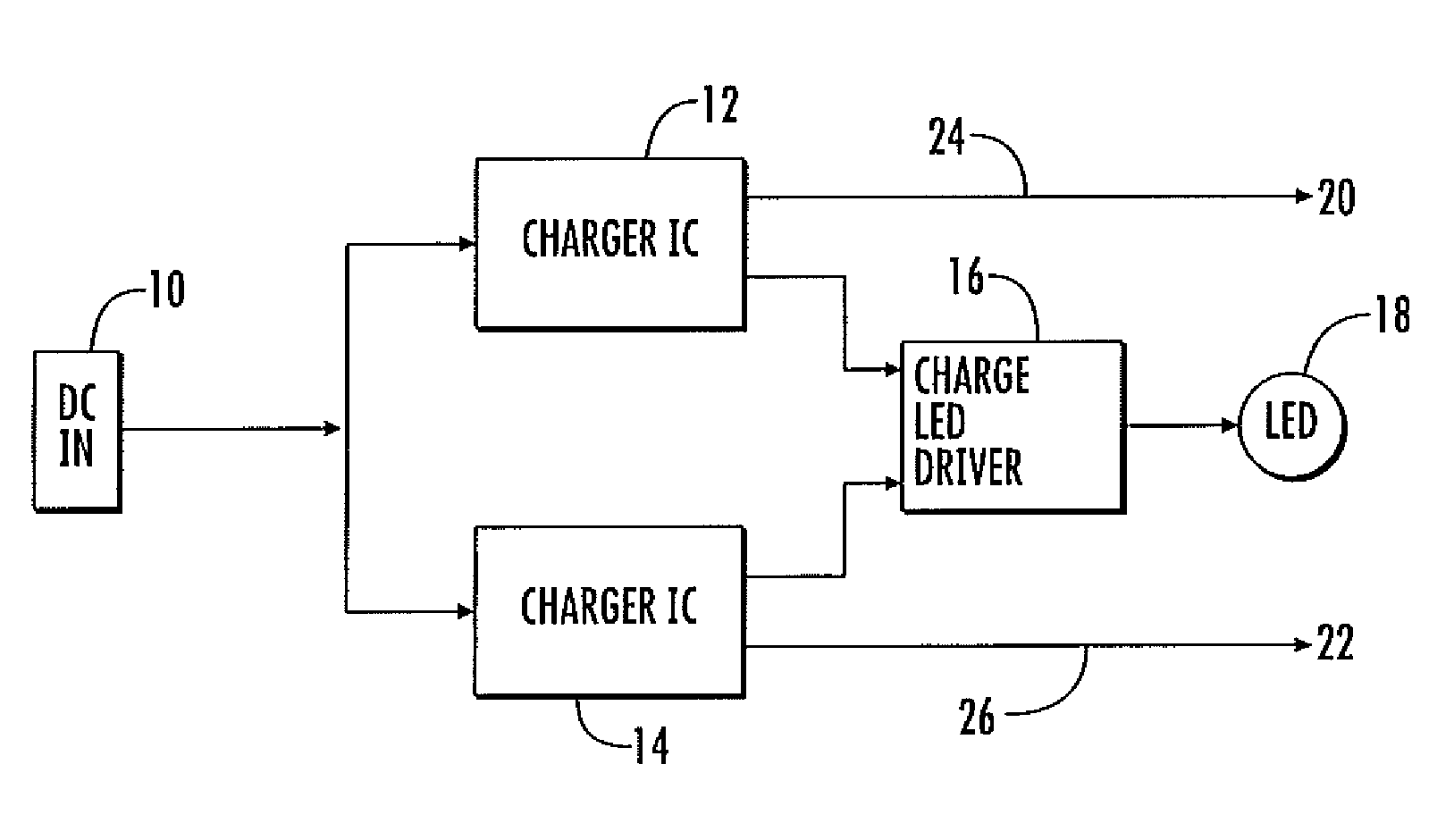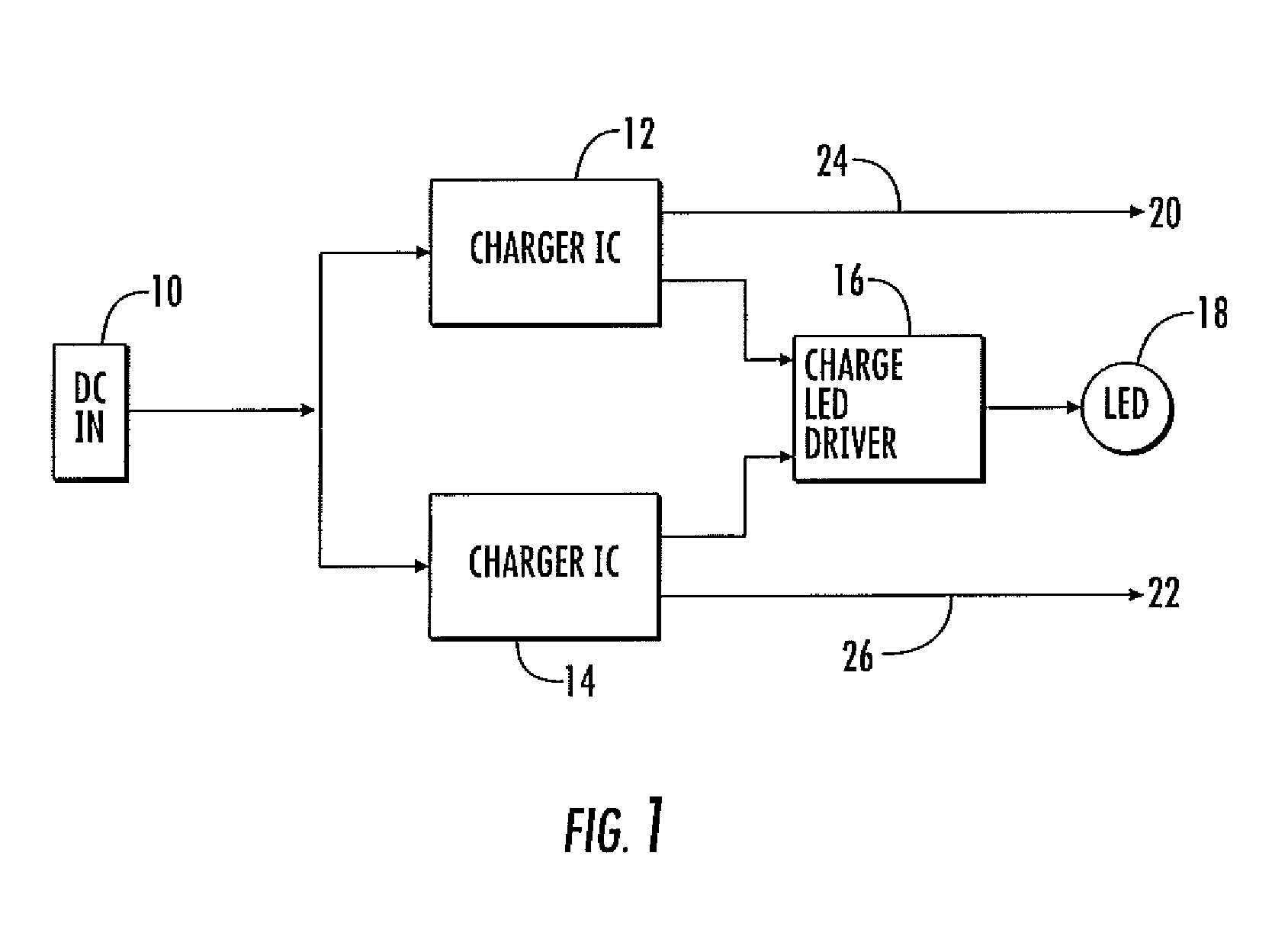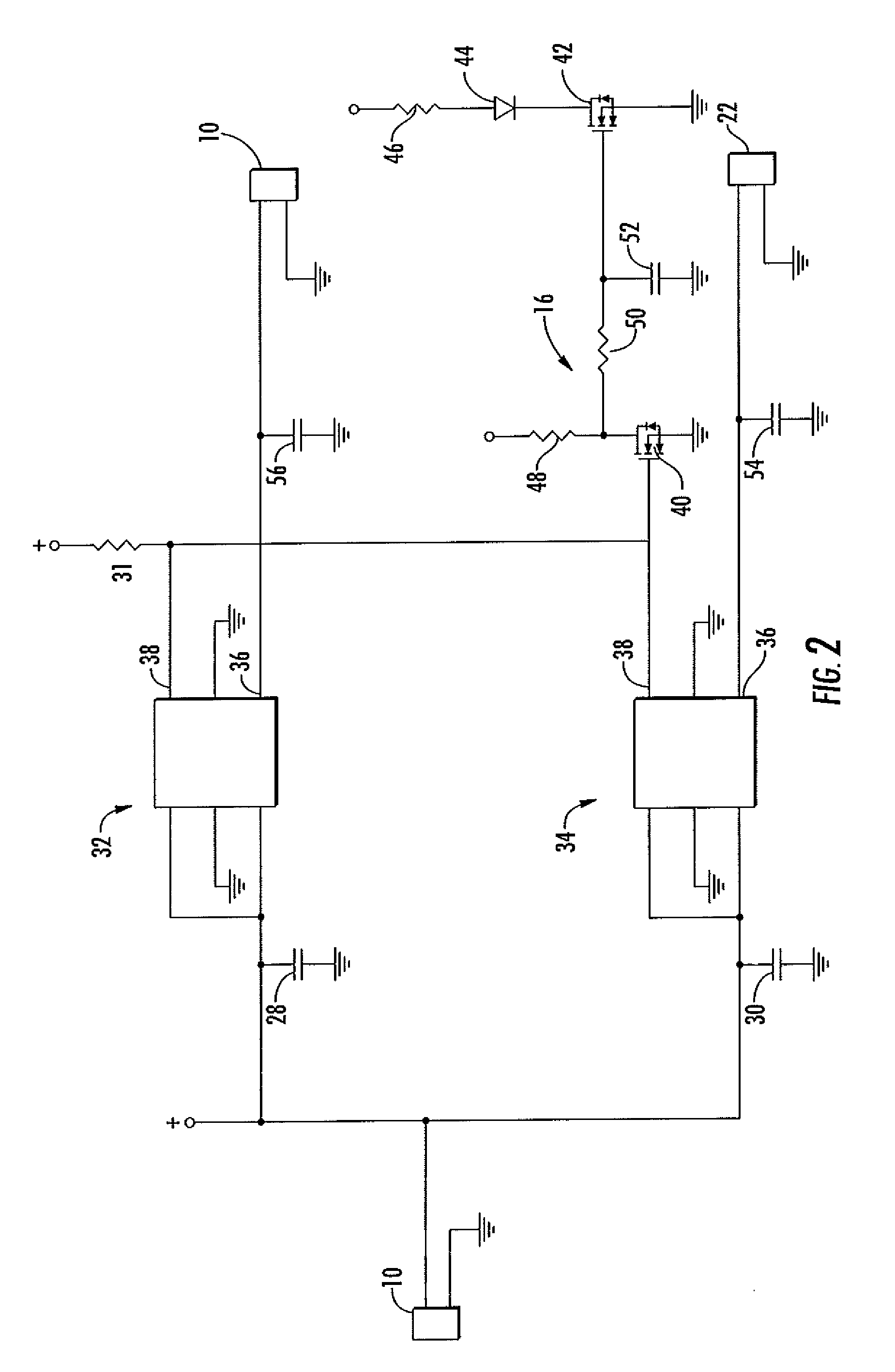Heated insoles
a technology of insoles and soles, which is applied in the direction of soles, electric vehicles, transportation and packaging, etc., can solve the problems of exposing the charging components to heat and mechanical stress of use, and the current design, while conventional, is limited
- Summary
- Abstract
- Description
- Claims
- Application Information
AI Technical Summary
Benefits of technology
Problems solved by technology
Method used
Image
Examples
Embodiment Construction
[0028]FIG. 1 is a block diagram of this invention with the AC to DC converter merely indicated as DC in block 10. Such AC to DC converter is plugged into a 120 volt wall socket or any other suitable AC wall socket to provide a DC output. The output of the DC converter 10 is supplied to charger intelligent circuits (IC) 12 and 14 which include the ability to receive the low DC voltage produced by converter 10, monitor the battery charge state and deliver suitable current and voltage to fully and safely charge the batteries. A charge LED driver 16 is provided to light an LED 18 as the batteries are being charged. The output of the charger intelligent circuits 12 and 14 are supplied to batteries 20 and 22 respectively, which are separately located within the insole.
[0029]Batteries 20 and 22 are located within the insoles, and two batteries are provided for the pair of insoles for the pair of shoes. Cables or conductors 24 and 26, respectively, are provided as outputs of the IC circuits...
PUM
 Login to View More
Login to View More Abstract
Description
Claims
Application Information
 Login to View More
Login to View More - R&D
- Intellectual Property
- Life Sciences
- Materials
- Tech Scout
- Unparalleled Data Quality
- Higher Quality Content
- 60% Fewer Hallucinations
Browse by: Latest US Patents, China's latest patents, Technical Efficacy Thesaurus, Application Domain, Technology Topic, Popular Technical Reports.
© 2025 PatSnap. All rights reserved.Legal|Privacy policy|Modern Slavery Act Transparency Statement|Sitemap|About US| Contact US: help@patsnap.com



